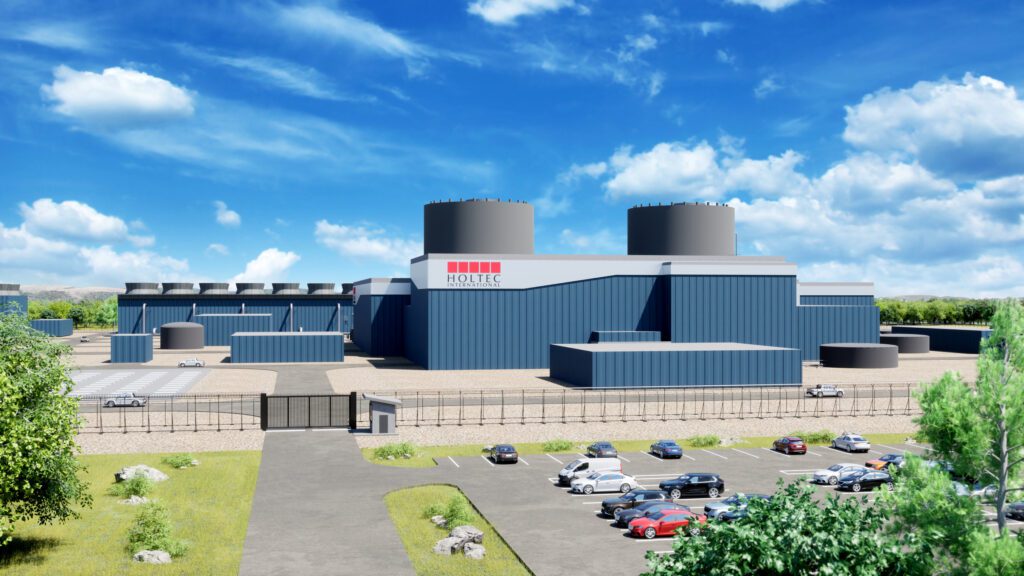Holtec Bets on Nuclear Paired with Solar to Support Decarbonization
The decarbonization of power generation is fostering research and development of new energy technologies, and some companies are reimagining what’s possible when it comes to power plant design.
That includes pairing nuclear power with solar power, in a system that could repurpose a brownfield site—for example, a closed or soon-to-retire thermal power plant with transmission infrastructure already in place—or be built as a standalone venture to support the power grid or distributed power generation.
COMMENTARY
U.S.-based Holtec International, recently in the news for its work toward a restart of the Palisades nuclear power plant in Michigan, has announced what it calls a CNSP, or combined nuclear/solar plant. The company said the technology would combine Holtec’s SMR-300 small modular reactor (SMR) design with the group’s HI-THERM HSP solar thermal system, and Holtec’s Green Boiler.
“We are pleased to announce a new innovative power plant design which melds the benefits of nuclear [high energy density, non-polluting, base load] with those of solar [zero fuel cost, minor regulatory barriers] that is entirely carbon-free and is adaptable for deployment in any country,” Holtec wrote in a news release. “Called CNSP, an acronym for Combined Nuclear/Solar Plant, this design employs Holtec’s SMR-300 small modular reactor and the Company’s HI-THERM HSP, solar thermal system, along with Holtec’s Green Boiler to provide base load or on-demand power while eliminating the intermittency drawback of solar plants. The Green Boiler is a three-in-one device that: 1) can store vast amounts of heat, 2) receives high temperature heat conveyed to it from the solar collector, and 3) can make motive steam at the required pressure and superheat to power the turbine.”

There are other nuclear/solar combinations, incorporating different designs. California-based Oklo in 2019 unveiled its Aurora project, a power plant with a small nuclear reactor and integrated solar panels, capable of producing about 1.5 MW of electricity, along with heat. Oklo has described Aurora as “advanced fission clean energy plant design developed to power communities with affordable, reliable, clean power.”
Aurora, unlike the Holtec design, includes what Oklo calls a “fission battery,” which uses metallic fuel. The sloped roof of the Aurora holds the solar panels. Oklo last year announced plans to deploy larger Aurora units.
Many countries have discussed deploying SMRs as a way to provide increased power generation while also supporting decarbonization. Holtec has said one application of the CNSP technology would be to build it at the site of a coal-fired power plant, which would have a large land area to accommodate the SMR and solar system, and use the plant’s existing infrastructure.

“We believe that an adroit combination of nuclear and solar embodied in the CNSP provides a compelling solution for nations seeking to move past fossil fuels,” said Dr. Kris Singh, Holtec’s president and CEO. The company has said it ideally could be used in areas with strong potential to utilize solar power.
“The coal-fired plants typically have sufficient land area to house the CNSP, which would use the coal plant’s power block minimizing the cost of transition,” wrote Holtec. “The steam production portion of the coal plant will be decommissioned, freeing up most of the plant’s land area where the solar plant would reside.”
There were many advancements in the design of small modular reactors in 2023; to learn more, read “2023: A Transformative Year for Small Modular Reactors.”
Though many companies are working on innovative SMR designs, commercial deployment has lagged due to a variety of issues, among them safety concerns, regulatory challenges, and the need for strategies for fuel management. Holtec’s design, based on some already proven technologies, and what the company said is an eye toward safety, may avoid at least some of those barriers.
“In summary, our CNSP technology seeks to make the Sun a valuable source of fuel and a major contributor to the global drive for clean energy generation led by the renascent nuclear energy,” wrote Holtec. “Our SMR-300 small modular reactor is premised on the most proven type of light water technology used in most land-based reactors and in submarines and aircraft carriers. SMR-300 has added defense-in-depth features that are gravity-actuated that confer fail-safe emergency recovery capability to the nuclear plant qualifying it for the moniker ‘walk away safe.’ The energy contribution of the Sun to the power plant will occur through the HI-THERM HSP hybrid solar plant, which is considerably more efficient than its predecessor technologies, yielding as much as 8 MWh of solar heat per acre in equatorial and subtropical locales.”
Holtec in providing details about its system wrote: “The nuclear reactor’s steam supply system and the heat from the solar thermal plant are conjugated in the Green Boiler which is a multi-function device engineered to produce steam at the desired pressure and superheat to run the coal plant’s existing turbogenerator. Where the site is virgin, i.e., it has no pre-existing fossil plant, the solar thermal plant can be as large as the available land area will accommodate. Experts in power plant cycle design would appreciate that the CNSP will have a much higher thermodynamic efficiency than the nuclear plant alone and would make solar power an integral part of base load supply. It should be noted that the CNSP does not use any batteries, which have been the Achilles’ heel of the renewable energy industry. In fact, CNSP contains no fragile parts or materials that may limit its service life, which is expected to exceed 60 years.”
Those active in the nuclear power space will no doubt watch Holtec’s efforts with interest, particularly as other developers of SMRs have gotten positive news about their designs in recent weeks.
—Darrell Proctor is a senior associate editor for POWER (@POWERmagazine).